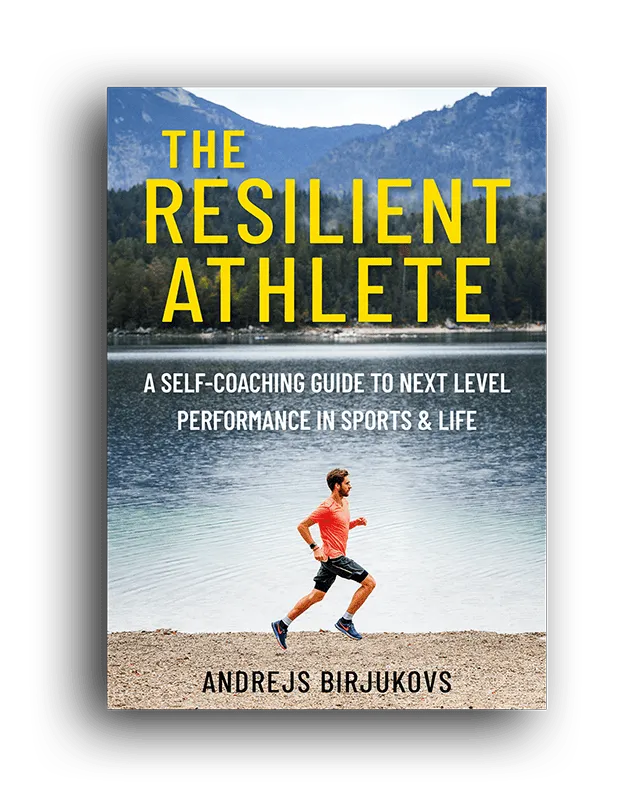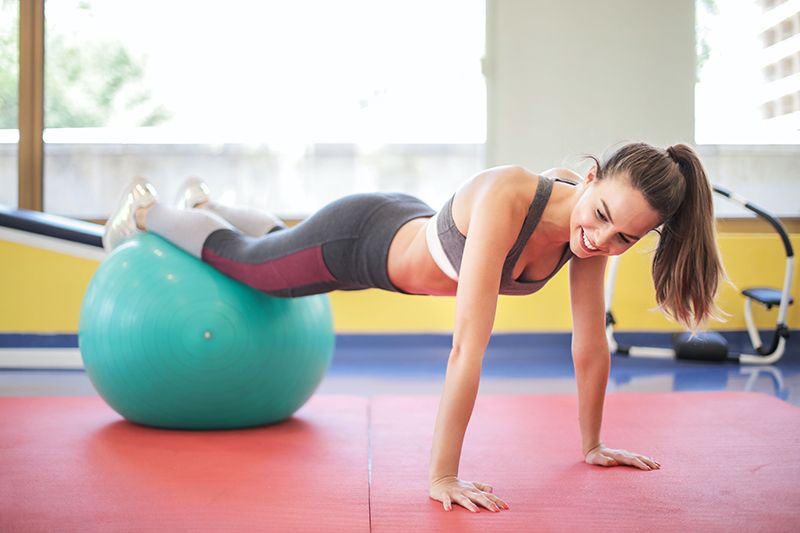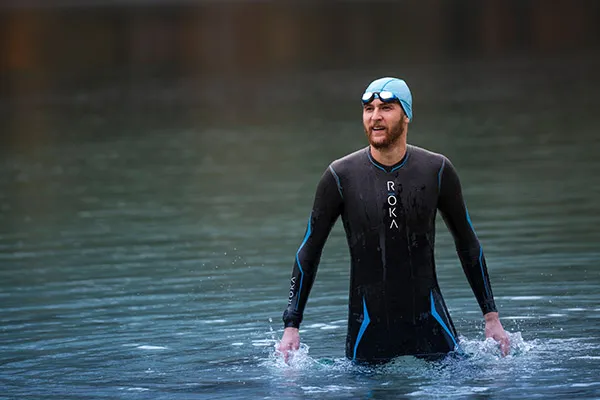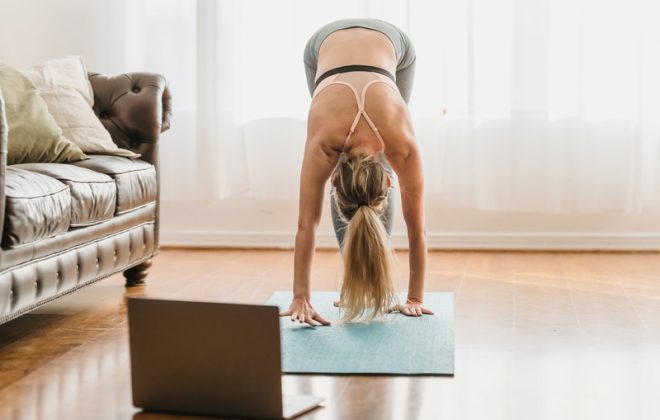5 Core Exercises For Runners To Get Fast & Stay Injury-Free
Marathon is an endurance event and training for it is time consuming. With such a big goal ahead it can be tempting to run as much as possible to get in the best shape. However, finding time to include core exercises for runners may be as important as the running itself.
Not only will building core strength reduce the risk of injury, but it will also improve running economy and speed as well. Big bonus to think about.
Running injuries during marathon training
Last Thursday was a perfect summer day, so I took my skateboard out to enjoy some sun and vitamin D. I had a video camera in my hand and didn’t pay much attention to the road surface.
You can kind of see where this is going.
Painful details aside, I hit a rock and went flying forward, landing on my hip and elbow. Straight away I felt blunt pain deep in the hip and was afraid I jeopardized my whole marathon training.

Running injuries are rarely caused by accidents, though.
Preventing injuries with core exercises
Accidents like this aside, overused or fatigued muscles is what causes majority of running injuries. That is because training load forces muscles to shorten and get tight, making them more injury-prone.
All muscles in the body are inter-linked. When one muscle gets overused or fatigued, the load is forced on adjacent or supporting muscles, causing discomfort or pain.
The best example is knee pain, which is most frequently caused by tightness in the hips and subsequent tightness in the IT Band.
Many athletes who added hip flexibility and strengthening exercises into their schedule have noticed knee pain disappear in a matter of a week.
It is possible to prevent running injuries that are not caused by an accident.
Overused muscles is often a result of too much training – in particular, too much running too soon. Adding a week of reduced volume once a month and relaxing the muscle will help to recover it. However, building core strength is what minimizes the risk of this happening again in the future.
Core muscles is like a central hub that holds together all other muscle groups – especially lower body. It keeps the body balanced and in sync. Adding core exercises for runners into training is a great way to remove chronic muscle pain and mitigate injury risk.
Substituting just 10 minutes of running with core training every couple of days (or adding it on top) will really elevate the training to a new level.

The Resilient Athlete
A Self-Coaching Guide to Next Level Performance in Sports & Life
Are you aiming to become a resilient athlete who is able to withstand any pressure? Be able to jump on any opportunity? Take any challenge life throws at you head on?
Then this book is for you.
Learn moreBuilding core strength helps runners get faster
Tight muscles are not only more injury-prone, but are also short and inefficient.
That is exactly why athletes do extensive warm ups before every session or competition. Lengthening the muscle extends its range of motion and promotes blood flow, which makes them fatigue slower.
Core exercises for runners not only focus on building strong core, but also working on smaller supportive muscles. That improves running form, which is great for economy, as well as correct any muscle imbalances (if such exist).
You can do several of these exercises every other day or can include an hour-long session of Pilates every now and then. It is much harder than it sounds and the effect from even one session per week is amazing.

Core exercises for runners
Core and supportive muscles are not large in size. Also, their role is not to take all the load, but rather support the good posture or form. So, they have to be trained for endurance and not size.
Hence, building core strength is most effective with body weight exercises. That eliminates the risk of overusing these muscles – after all, we only want to strengthen the muscle, not fatigue it.
Some people tend to overdo the intensity or duration of the exercise, though.
It’s much better to do many short (30sec) sets of different exercises with short rest than holding one position for many minutes.
There are many exercises that target the core, but it’s not necessary to do every one in the book.
Runners require lower body stability and abdominal strength, so core exercises for runners should focus on building that.
Plank variations
Plank is the exercise that targets all core. Focus on keeping your body straight by contracting all muscles – core, abs, glutes, hips and back.
Adding variety and movement to the plank will help to activate more muscles and is more efficient.
Hip Abduction
Hip abduction is a great exercise to strengthen hips. That really helps to stabilize the knee and promote efficient leg swing during the run.
Avoid swinging the leg – instead lift and lower at even speed.
Glute bridges
Aside from core strength, glute bridges help to strengthen glute muscles and improve hip flexor flexibility, which is very important for running speed. It is especially important for people who spend a lot of time at the desk (so basically everybody)
Focus on keeping hips, abs and chest aligned and pause for 2-3 seconds at the top.
Bird-Dog
Bird Dog exercise helps to promote good posture. We often focus on strong abs and chest and really forget about postural muscles – back and hamstrings. All of these muscles help to maintain good running form and healthy posture, which improves performance and prevents injuries.
Don’t forget to keep the spine neutral and the body ‘tall’.
Hollow body hold
This hold works all abs muscles evenly and, if done well, focuses on lower abs that help to maintain stability and proper running form.
Keep the lower back in contact with the floor at all times.
Did you find this information useful? Share the post with others using the buttons below.
My first marathon training update
Update: I ran my first marathon and it was a roller coaster of emotions. Read my race report here, if you’re interested.
As I went to bed the evening of the accident I expected to skip at least a week or two of running. But, it’s surprising what 10 hours of sleep can do. After careful stretching the next morning (Friday) I was able to walk somehow normally and generally felt better than the evening before.
That day I commuted to work by bike and considered that a recovery session. There’s much less vibration and impact on the bike, so my hip had even more time to heal.
On Saturday I went for a short 20min jog to see how things are doing. I did it on grass to minimize the impact, yet it was still painful. My Garmin showed that that my balance is off to one side by more than 1%, which is probably because my hip flexor is strained. It’s usually pretty even at around 50-50.
Since the accident I spent a lot of time doing core exercises above and eating well, which definitely sped up my recovery. So, a week after the pain is almost gone and I’m back to my normal schedule.
Painful as it was, that was a good experience after all. Injuries like this always make you think what can be done to stay healthy in the future.
Training progress
I am now in the build phase of my marathon training and am doing some harder sessions than in my base building phase.
I substituted Tuesday’s planned speed work for a hill run (around 1 min gradual uphill and back down with a total of 2-3 min rest). It was a good decision – my legs thanked me for not putting too much pressure on my ‘injured’ hip.
Towards the end of the week I was feeling good enough to do a fast 5K tempo effort and came in at 20:00, which feels good.
I feel I have overall endurance now and need to work more on my speed to be able to run fast and far. Once my hip will finally heal, I’ll add more distance to my tempo runs and focus more on short speed workouts (around 400-800 repeats) to add some speed.
I have a 6K run in a couple of months, so it’s time to start preparing for that.

Have an opinion? Share via links below and tag @theathleteblog
Tags In
Andrejs Birjukovs
GET A FREE TRAINING PLAN
Subscribe to my email list and get access to a free 4-week “back in shape” training plan
You’ll also get two full-body strength sessions and some other goodies!

How did I get here?
Hey there! My name is Andrejs and I am here to inspire, entertain and get you fit for any adventure.
I went from being an over trained pro athlete to an endurance coach sharing how to listen to your body and live life to the fullest.
Traveling, new sports & activities brought new meaning to my training and made it much more effective, fun and enjoyable. And I'm here to help you do the same.


